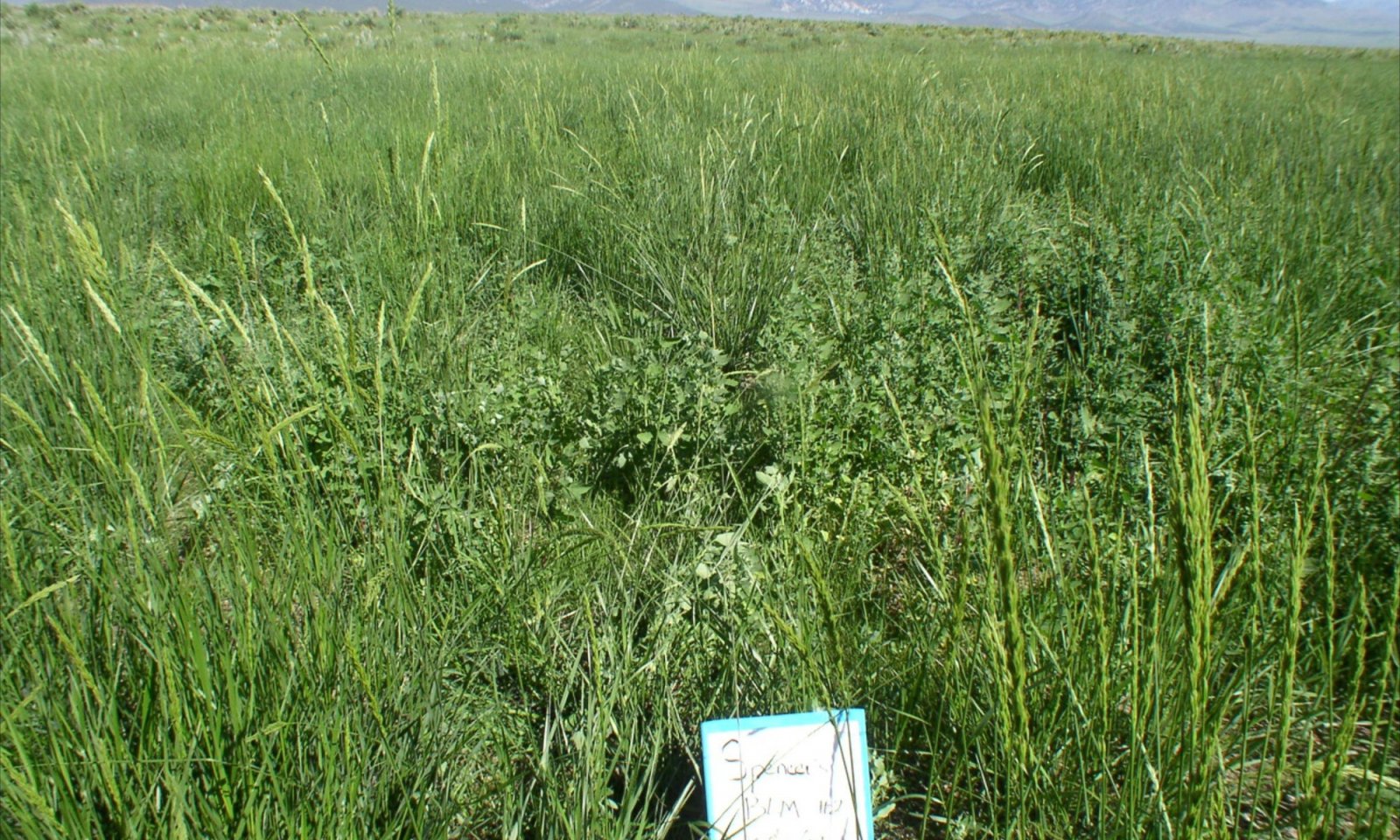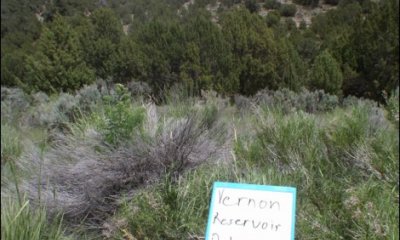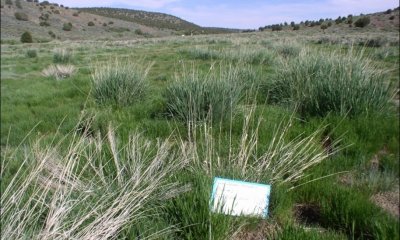
Loamy Bottom (basin wildrye)
Scenario model
Current ecosystem state
Select a state
Management practices/drivers
Select a transition or restoration pathway
- Transition T1a More details
- Transition T2a More details
- Transition T2c More details
- Transition T2b More details
- Transition T3a More details
- Transition T3b/T3c More details
- Restoration pathway R4a More details
- Transition T4a More details
- Transition T4b More details
-
No transition or restoration pathway between the selected states has been described
Target ecosystem state
Select a state
Description
The Reference State contains plant communities presumed to occur prior to the introduction of non-native plants, livestock grazing, and other modern disturbances. Disturbance regimes resemble those described above in the ecological dynamics section.
Submodel
State 2
Current Potential State




Description
The Current Potential State functions comparably to the Reference State, although non-native plant species are present in the community. Under proper management, the current potential state maintains the ecological processes and community phases that were present in the Reference State.
Submodel
Description
The Non-Sprouting Shrub State is characterized by increased shrub dominance in the community at the expense of native perennial bunchgrasses. The combination of lack of fire and reduced perennial grass dominance decreases the site's resistance to invasion by cheatgrass and other invasive species, which co-dominate the understory and the seed bank. Drought and/or improper grazing contribute to reductions in perennial grass. Drought may be due to a lowered water table or altered site hydrology from wells, diversions or other obstructions to runoff and subsurface flow. Even if drought or grazing pressure is remediated, sagebrush dominance and non-native species in the understory and seed bank preclude the re-establishment of perennial grass dominance.
Submodel
Description
The Seeded Range State includes successful range seedings and old range seedings that have re-established native plant dominance.
Submodel
State 5
Invasive Annual Grass State





Description
The Invasive Annual Grass State maintains itself by increasing fire frequency and efficiently utilizing available nitrogen resources in the soil. Diverse invasive forbs and annual grasses such as Russian thistle, jointed goatgrass, squarrose knapweed, and various non-native thistles can be productive in this state, but cheatgrass is the dominant species. Basin wildrye may be present if the water table has not dropped significantly.
Submodel
Mechanism
Transition T1a represents the introduction of non-native plant species associated with European settlement. This transition is irreversible since eradication of non-native species would require costly management inputs; however, this transition results in minimal functional change.
Mechanism
Transition T2a occurs when perennial grasses decrease due to prolonged improper grazing and/or drought. Shrubs increase in dominance and alter the distribution of nutrients and availability of light to the subcanopy. The threshold is crossed when perennial grasses are no longer able to recover even in the event of brush removal. An indicator of crossing a threshold is reduced perennial plant vigor, particularly in reproductive capability.
Mechanism
Transition T2c occurs when brush is removed and perennial grass seed is introduced in conditions that are favorable for seedling establishment. Water and nutrients are available to seeded species and they establish well and reinforce their own dominance on the site by efficiently using available resources.
Mechanism
Transition T2b occurs when brush is removed and perennial grass seed is introduced in conditions that are not favorable for seed establishment, such as drought. The transition is triggered by brush removal that frees up resources on the site. However, due to poor conditions relating to seed germination and establishment of desired species, the seeding fails and resources become available for the increased germination and establishment of non-native invasive species.
Mechanism
Transition T3a occurs when brush is removed and perennial grass seed is introduced in conditions that are favorable for seedling establishment. Water and nutrients are available to seeded species and they establish well and reinforce their own dominance on the site by efficiently using available resources.
Mechanism
Transition T3b occurs when brush is removed and perennial grass seed is introduced under conditions that are not favorable for seedling establishment. The transition is triggered by brush removal that frees up resources on the site. . However, due to poor conditions relating to seed germination and establishment of desired species, the seeding fails and resources become available for the increased germination and establishment of non-native invasive species.
Transition T3c occurs when perennial grass cover and seed production are negligible and cheatgrass becomes more dominant than perennial grasses. Usually fire coupled with prolonged improper grazing and/or drought triggers the feedback switch. However, this transition can occur in the absence of fire if perennial grasses become less dominant than cheatgrass.
Mechanism
Restoration pathway R4a occurs when long-term proper grazing efforts and favorable weather conditions allow for native plant establishment in an established seeding of perennial non-native grasses. Big sagebrush and perennial grasses drive ecosystem processes such that the distribution of water, nutrients and light is similar to that of the Current Potential State (State 2).
Mechanism
Transition T4a occurs when perennial grasses decrease due to prolonged improper grazing and/or drought. Shrubs increase in dominance and alter the distribution of nutrients and availability of light to the sub-canopy. The threshold is crossed when perennial grasses are no longer able to recover even in the event of brush removal. An indicator of crossing a threshold are shrub dominance and reduced perennial grass vigor, particularly in reproductive capability.
Mechanism
Transition T4b occurs when a failed seeding results in cheatgrass dominance. This transition is most likely to occur when cheatgrass seed is abundant in the understory and can result from high cheatgrass seed production on site or on adjacent land.
Model keys
Briefcase
Add ecological sites and Major Land Resource Areas to your briefcase by clicking on the briefcase (![]() ) icon wherever it occurs. Drag and drop items to reorder. Cookies are used to store briefcase items between browsing sessions. Because of this, the number of items that can be added to your briefcase is limited, and briefcase items added on one device and browser cannot be accessed from another device or browser. Users who do not wish to place cookies on their devices should not use the briefcase tool. Briefcase cookies serve no other purpose than described here and are deleted whenever browsing history is cleared.
) icon wherever it occurs. Drag and drop items to reorder. Cookies are used to store briefcase items between browsing sessions. Because of this, the number of items that can be added to your briefcase is limited, and briefcase items added on one device and browser cannot be accessed from another device or browser. Users who do not wish to place cookies on their devices should not use the briefcase tool. Briefcase cookies serve no other purpose than described here and are deleted whenever browsing history is cleared.
Ecological sites
Major Land Resource Areas
The Ecosystem Dynamics Interpretive Tool is an information system framework developed by the USDA-ARS Jornada Experimental Range, USDA Natural Resources Conservation Service, and New Mexico State University.









